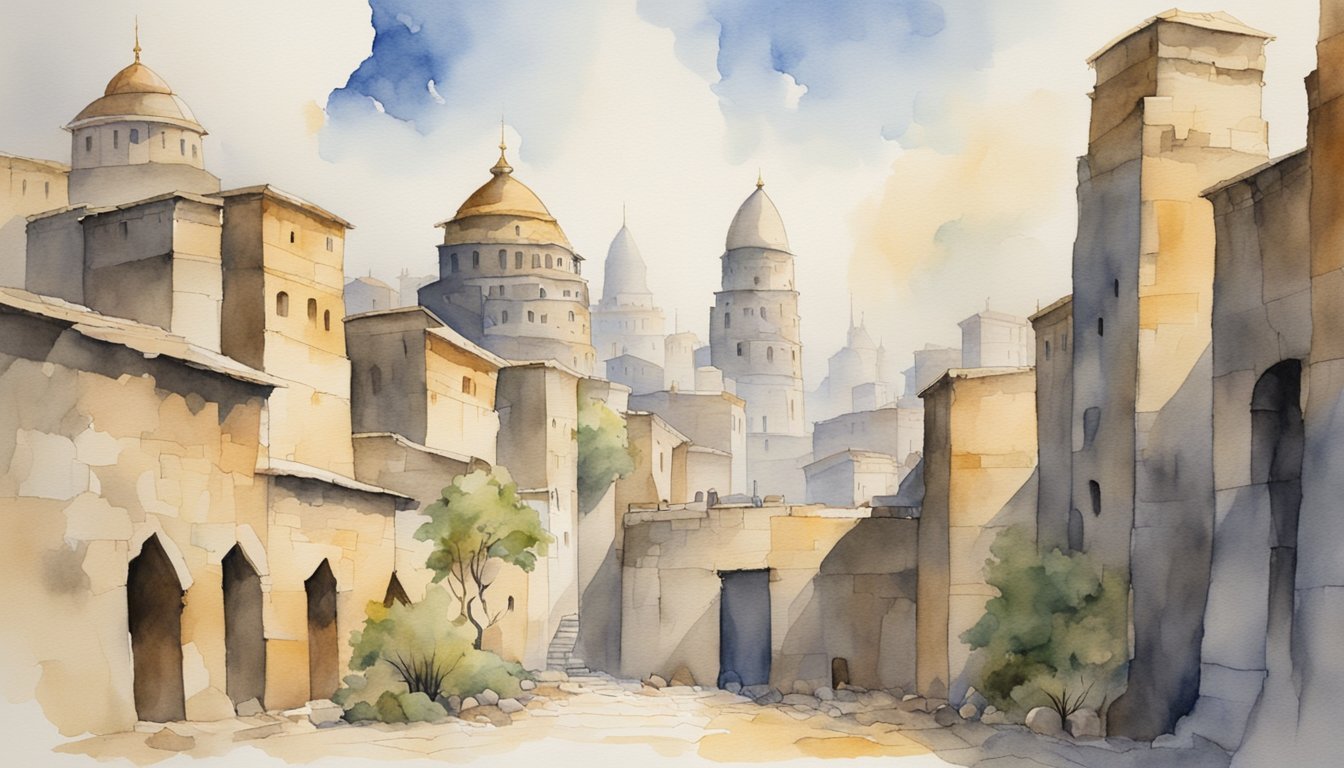Origins and Growth

The Kowloon Walled City’s history is intertwined with periods of dramatic transformation, from a Chinese military fort to an enclave within a bustling metropolis. International influences and a complicated history with Great Britain marked key phases of its unique development.
Historical Timeline
- 1660s – The area becomes home to a minor military fort under Chinese rule.
- End of the First Opium War (1842) – Following China’s defeat, Great Britain obtains Hong Kong Island which leads to the fort’s reinforcement.
- Second Opium War (1856-1860) – Post-war treaties further diminish Chinese control over the region, but the Walled City remains under Chinese authority.
- World War II – Japanese forces occupy Hong Kong and demolish the city’s wall to use the materials for expanding the nearby Kai Tak Airport.
- Post-WWII era – Refugees flock to the Walled City, increasing its population density.
- 1950s-1970s – A growth spurt transforms it into an area known for squatters, informal housing, and as a hotspot of unchecked criminal activity.
- 1987 – The Hong Kong government, along with Chinese authorities, announces plans for the Walled City’s eviction and subsequent demolition.
- 1994 – The demolition is completed, and a park is planned on the site to preserve some of the historical elements.
International Influence
The legacy of the Kowloon Walled City is shaped significantly by international dynamics. The First and Second Opium Wars, pivotal to the city’s history, set the stage for the colonial-era status of Hong Kong. Decisive moments such as the Treaty of Nanking and the Convention of Peking in the aftermath of these wars shifted control of regions around the Walled City, affecting its sovereignty and governance. China’s cession of Hong Kong Island and later the Kowloon Peninsula to Great Britain left the Walled City in a unique position as a Chinese enclave, bringing about a clash of administrative powers that persisted until the end of British rule. This continuous tug-of-war led to the Walled City becoming a refuge for Chinese citizens, especially after WWII, and eventually the British colonial government tacitly allowing the Walled City to exist as a sort of legal anomaly until its eventual demise in the hands of a joint Chinese-British decision preluding the 1997 Handover of Hong Kong.
Demolition and Legacy
The demolition of Kowloon Walled City in the early 1990s marked the end of an era for what was once the most densely populated place on Earth. In its place, a historical park now remembers the site’s unique legacy, which continues to influence popular culture and architecture around the world.
Kowloon Walled City Park
After the demolition of Kowloon Walled City was completed in 1994, China and Hong Kong agreed to convert the site into a public park. This park, appropriately named the Kowloon Walled City Park, occupies approximately 31,000 square meters. It provides a stark contrast to the hyper-congested labyrinth of structures that previously occupied the space. With its traditional Jiangnan garden design, the park aims to reflect the historical significance of the original walled city.
Cultural Impact
The memory of Kowloon Walled City has left a lasting impact on culture and media. Greg Girard and Ian Lambot’s photographic book, “City of Darkness: Revisited”, offers a unique glimpse into the lives that intertwined within the city’s compact architecture. The Walled City’s notoriety inspired settings in films like “Batman Begins,” directed by Christopher Nolan, suggesting a fascination with its maze-like urban fabric. In gaming, Kowloon Walled City is recreated in virtual environments like “Call of Duty: Black Ops,” allowing players to engage with the city’s complex narratives. The community that once thrived there continues to stir imaginations worldwide, influencing how stories are told and environments are designed.

